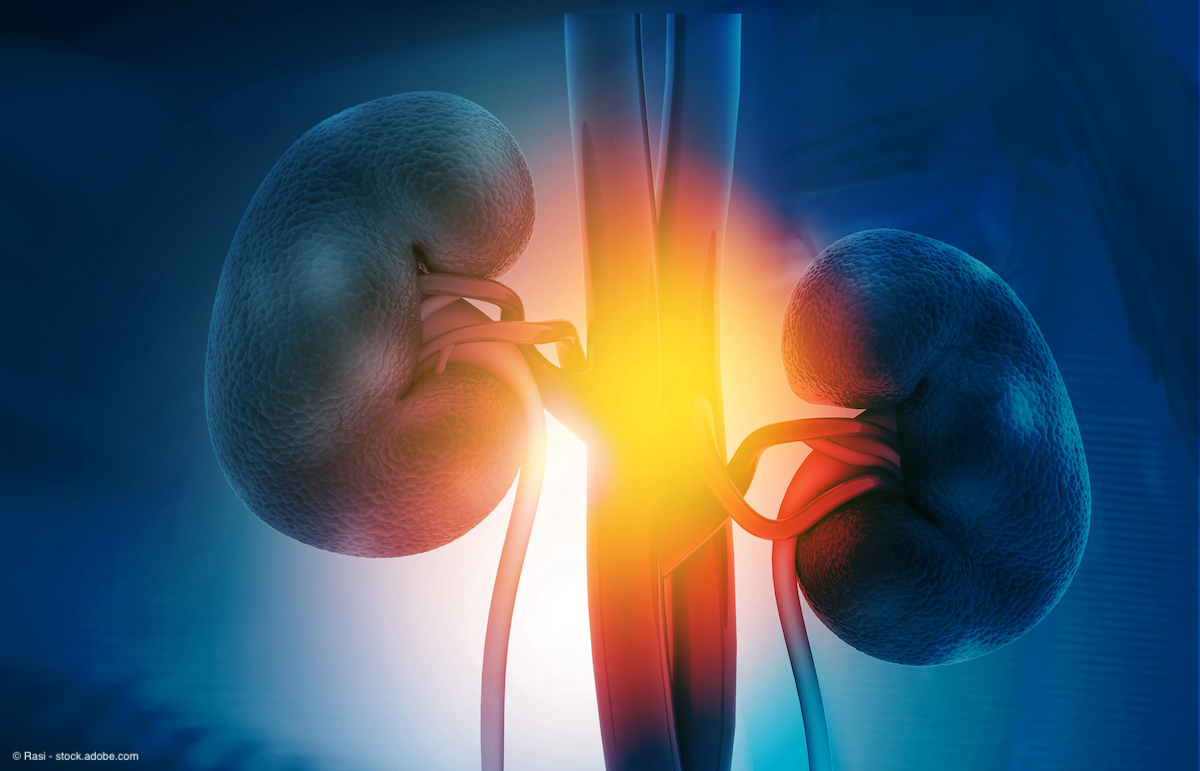Article
Lenvatinib/pembrolizumab efficacy in renal cell carcinoma sustained at 4-year follow-up
Author(s):
At a median follow-up of about 50 months, lenvatinib plus pembrolizumab maintained an overall survival benefit compared with sunitinib in patients with advanced renal cell carcinoma.
The combination of lenvatinib (Lenvima) and pembrolizumab (Keytruda) showed sustained benefits in overall survival (OS) and progression-free survival (PFS) compared with sunitinib (Sutent) at a median follow-up of 4 years in patients with advanced renal cell carcinoma (RCC), according to updated findings from the phase 3 CLEAR study (NCT02811861) presented at the 2023 ASCO Annual Meeting.1
Initial findings from the CLEAR study were previously published in the New England Journal of Medicine. Based on this primary analysis, the FDA approved the combination of lenvatinib and pembrolizumab in August 2021 as a first-line therapy for patients with advanced RCC.

At a median follow-up of approximately 50 months, treatment with lenvatinib plus pembrolizumab led to a 21% reduction in the risk of death compared with sunitinib (HR, 0.79; 95% CI, 0.63-0.99; nominal P-value = .0424). The median OS was 53.7 months (95% CI, 48.7–not estimable [NE]) with the combination vs 54.3 months (95% CI, 40.9–NE) with sunitinib. The OS rates at 24, 36, and 48 months all favored the combination arm vs the control arm at 80.4% vs 69.6%, 66.4% vs 60.2%, and 55.9% vs 52.5%, respectively.
When presenting these data at the ASCO meeting, study author Thomas E. Hutson, DO, PharmD, FACP, explained that the reason the OS outcomes for the 2 study arms appeared to come closer together at the 4-year time point was due to subsequent anticancer medications.
“Sixty-nine percent of patients who received sunitinib went on to receive subsequent anticancer therapy, including anti-VEGF therapy in 45% and PD-1/L1 checkpoint inhibitors in 55%. This is comparted to only 51% of patients moving on to additional anticancer therapy in the lenvatinib/pembrolizumab group, with only 16% receiving PD-1/L1 checkpoint inhibitors,” said Hutson, who is director of the urologic oncology program and co-chair of the Urologic Cancer Research and Treatment Center at Baylor University Medical Center.
Hutson said the investigators used a 2-stage method of adjusting for the impact of subsequent anticancer medications and determined a final adjusted HR for OS at 4 years of 0.55 (95% CI, 0.44-0.69), “suggesting that the OS analysis was indeed impacted by the imbalance in the use of subsequent anticancer medication in the sunitinib group vs the lenvatinib/pembrolizumab group.”
Regarding PFS, Hutson said that with an additional 23 months of follow-up, the median PFS was 23.9 months (95% CI, 20.8-27.7) with lenvatinib plus pembrolizumab compared with 9.2 months (95% CI, 6.0-11.0) with sunitinib, translating to a 53% reduction in the risk of disease progression or death (HR, 0.47; 95% CI, 0.38-0.57; P <.0001). The PFS rates at 24, 36, and 48 months all favored the lenvatinib/pembrolizumab vs the sunitinib group at 49.0% vs 23.4%, 37.3% vs 17.6%, and 24.5% vs 13.1%, respectively.
Overall, the 3-arm CLEAR study randomized patients to receive lenvatinib at 20 mg orally per day plus intravenous pembrolizumab at 200 mg every 3 weeks (n = 355), lenvatinib at 18 mg per day plus oral everolimus at 5 mg per day (n = 357), or oral sunitinib at 50 mg per day for 4 weeks on and 2 weeks off (n = 357). Updated findings for the everolimus arm were not presented at the ASCO meeting.
Baseline characteristics showed that the median patient age was 64 years in the combination arm and 61 years in the sunitinib arm. MSKCC prognostic risk was similar between arms. In the combination arm, 27% of patients had favorable risk, 64% had intermediate, and 9% had poor risk disease. By IMDC, 59.2% had intermediate risk, 31% favorable, 9.3% poor, and 0.6% could not be evaluated. The PD-L1 combined positive score was ≥1 for a third of patients and <1 for a third of patients. It was not available for the remaining patients.
The objective response rate (ORR) was 71.3% with lenvatinib plus pembrolizumab (95% CI, 66.6-76.0) compared with 36.7% (95% CI, 31.7-41.7) for sunitinib (relative risk, 1.94; 95% CI, 1.67-2.26). The rate of complete responses was 18.3% with the combination compared with 4.8% for sunitinib. The median duration of response was 26.7 months (95% CI, 22.8-34.6) with lenvatinib/pembrolizumab compared with 14.7 months (95% CI, 9.4-18.2) with sunitinib.
The OS and PFS HRs were also described by risk criteria for the combination vs single agent. By IMDC criteria, the HRs for OS were 0.94 (95% CI, 0.58-1.52) for favorable risk patients and 0.74 (95% CI, 0.57-0.96) for intermediate and poor risk patients. The HRs for PFS were 0.50 (95% CI, 0.35-0.71) and 0.43 (95% CI, 0.34-0.55), respectively.
Regarding safety, Hutson said, “No new safety signals were identified; adverse events were managed with dose modifications as necessary.”
Initial findings from the CLEAR study were previously published in the New England Journal of Medicine.2 Based on this primary analysis, the FDA approved the combination of lenvatinib and pembrolizumab in August 2021 as a first-line therapy for patients with advanced RCC.3
References
1. Motzer RJ, Porta C, Eto M, et al. Final prespecified overall survival (OS) analysis of CLEAR: 4-year follow-up of lenvatinib plus pembrolizumab (L+P) vs sunitinib (S) in patients (pts) with advanced renal cell carcinoma (aRCC). J Clin Oncol 41, 2023 (suppl 16; abstr 4502). doi: 10.1200/JCO.2023.41.16_suppl.4502
2. Motzer RJ, Alekseev B, Rha S-Y, et al. Lenvatinib plus Pembrolizumab or Everolimus for Advanced Renal Cell Carcinoma. N Engl J Med. 2021; 384:1289-1300. DOI: 10.1056/NEJMoa2035716.
3. FDA approves lenvatinib plus pembrolizumab for advanced renal cell carcinoma. News Release. FDA. August 11, 2021. Accessed September 11, 2022. https://bit.ly/3B5MvGA

















